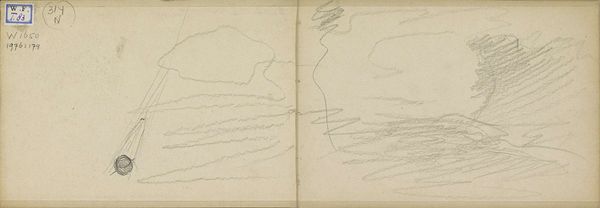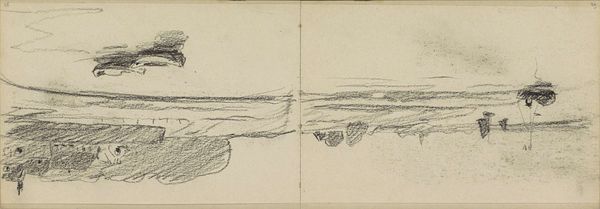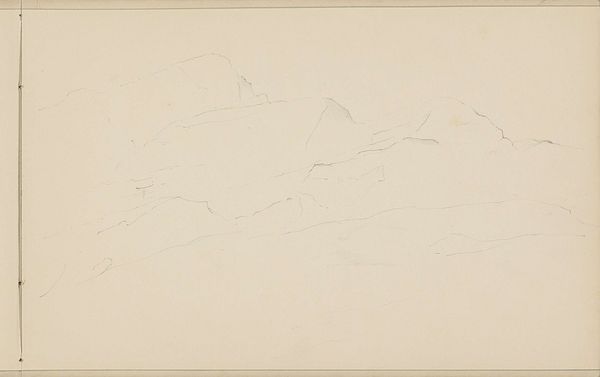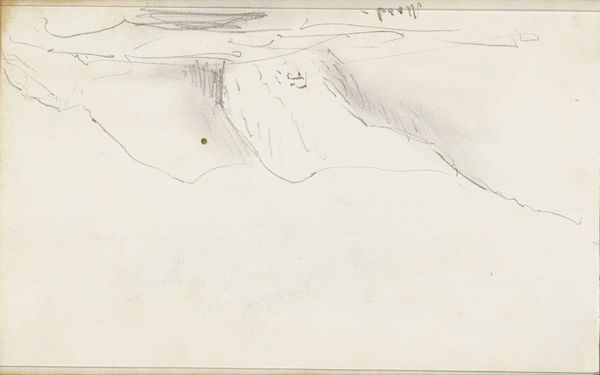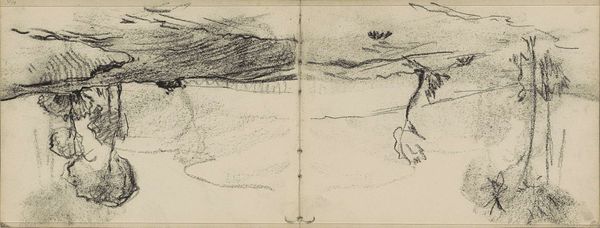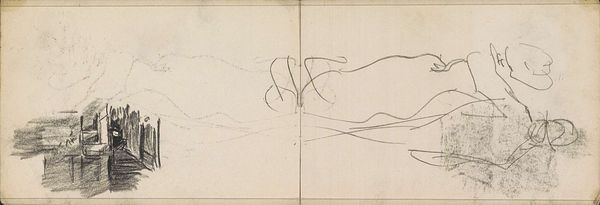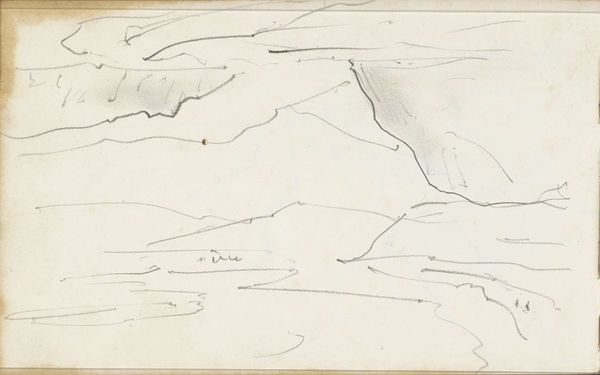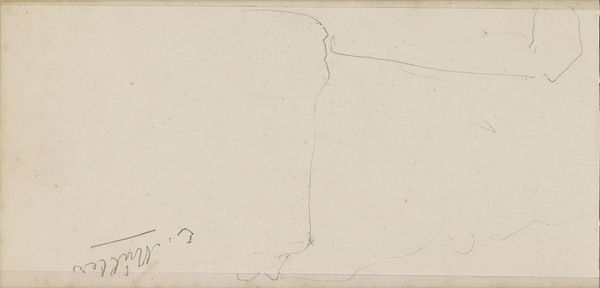
drawing, pencil
#
portrait
#
drawing
#
amateur sketch
#
light pencil work
#
hand drawn type
#
personal sketchbook
#
idea generation sketch
#
ink drawing experimentation
#
pen-ink sketch
#
pencil
#
abstraction
#
line
#
sketchbook drawing
#
sketchbook art
#
initial sketch
Copyright: Rijks Museum: Open Domain
Curator: Here we have "Wolkenlucht en twee koppen met open monden"—"Cloudscape and two heads with open mouths"—an intriguing drawing housed here at the Rijksmuseum, created sometime between 1865 and 1913. It appears to be a study done with pencil on paper. Editor: The drawing, with its light pencil work, looks like a fleeting thought captured—eerie in a way, the gaping mouths set against a hazy sky. The almost symmetrical faces contrast starkly with the asymmetrical landscape. Curator: The sketchbook quality here invites speculation on the artist's process. It is not necessarily a study for something larger. Perhaps a way of working through anxieties and existential angst or an example of art informing design by combining multiple, dissimilar objects and ideas? We need to ask: How did the availability of drawing materials at this time contribute to such personal expressions? Editor: I see the clouds and mouths as existing in tension, visually fighting for dominance within the frame. This conflict becomes the artwork's most important element—creating a sense of unease. The minimal, linear nature creates abstraction, challenging what is considered the portrait 'form'. Curator: And isn't it interesting how such a simple medium can produce complex social histories of mental health treatment and visual representation during the Victorian era? To understand this piece fully, we might explore class dynamics and their potential impact on the making and display of art like this. Editor: Perhaps; but I keep coming back to the immediate impact: the disquiet of floating heads caught between heaven and earth. The rawness exposes, almost intentionally, artistic expression beyond technical virtuosity, beyond social constructs, into the depths of pure feeling and basic form. Curator: Perhaps so. By considering all angles: the materials at hand, the sketchbook quality—and what these heads reveal about Victorian anxieties—we deepen our relationship with works of art on paper. Editor: And ultimately, for me, it is about recognizing what resonates. In that quiet dissonance lies artistic intention, pushing us toward introspection and asking ourselves, 'What am I experiencing? How does this shape me?'
Comments
No comments
Be the first to comment and join the conversation on the ultimate creative platform.
